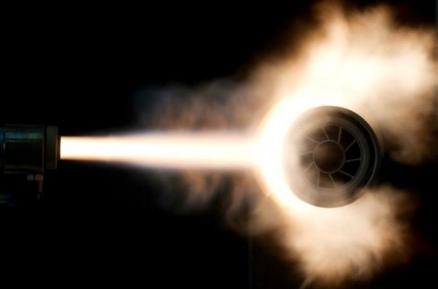One. Characteristics of metallurgical industry production
The metallurgical industry produces from ore to metal materials, through various production links such as mining, transportation, storage, crushing, classification, sorting, liquid-solid separation, pelletizing, sintering, smelting, casting, and refining. The main equipment of each link is under the extremely harsh working conditions such as high wear, high load, high temperature and corrosion. These factors lead to the failure of the production equipment, making the metallurgical industry become a major consumer of the national economy. Faced with this situation, in order to maintain production, a large number of spare parts must be consumed each year, and some still need to be imported. A large steel company will pay hundreds of millions of yuan for this year. On the other hand, modern metallurgical production is a highly continuous process. Even if the equipment in each part of the production process fails prematurely, it will cause production stoppage or production reduction, which will bring huge economic losses. For example, the slag slag of a steel company in China is extremely short in working life due to the erosion of high temperature melt. Every time it is replaced, the blast furnace needs to be depressurized by air, with less than three batches of charge, and less than 60t of iron.
The company's converter continuous casting production line continuous casting roller, its life is only 4,000 furnaces (200,000 tons), and Japan's similar continuous casting roller road can reach 15,000 furnaces, almost up to 4 times.
Second, anti-high temperature oxidation coating
1. Function. These coatings are used to improve the high temperature properties of the substrate (equipment or facility) material (higher temperatures up to 1150 ° C), allowing it to withstand high temperature chemical or physical dissolution processes as well as erosion processes for mechanical damage, or both.
2. Requirements for high temperature oxidation coatings. In order to protect the substrate from damage caused by high temperature oxidation, these coatings must: prevent the diffusion of oxygen in the atmosphere; prevent the coating itself from rapidly diffusing into the substrate; has a melting point above the operating temperature; has a higher operating temperature Low vapor pressure.
3. The recommended spraying materials are nickel-chromium alloy, nickel-chromium-aluminum alloy, and aluminum-sealed thermal insulation.
4. The recommended spraying methods are plasma spraying, high speed flame spraying, and combustion flame spraying.
5. Application examples include heating furnace, soaking furnace, heat treatment furnace, sintering furnace, hot blast stove, regenerator and regenerator furnace wall, surface of metal crucible; annealing disc, annealing cover, heat treatment fixture, outer surface of rotary kiln High temperature valves, sliding gates, flue pipes and chimneys. Polysilicon furnace, sintered metal forming, exhaust muffler, blast furnace tuyere, air supply system, sintering equipment, air blowing system, clean gas system, exhaust system, annealing furnace roll, Franconian furnace, hot metal impregnating heater, titanium Strips, forging tools, heating hoods, coke oven sealing devices, blast cooling systems, converter oxygen supply systems, coke oven tuyères, continuous casting rolls and cooling sand types.

Third, corrosion resistant gas coating
1. Function: These coatings must protect the matrix material exposed to high temperature corrosive gases. Because of the simultaneous oxidation and chemical reactions, it is necessary to prevent the formation of the coating reacting with the gas to damage the substrate.
2. Requirements for corrosion-resistant gas coating: It can withstand high temperature corrosive gas; It can withstand periodic thermal shock and overheating; it should match the thermal expansion coefficient of the substrate.
3. The recommended spraying materials are nickel-chromium alloy (except for sulfur-containing medium), and aluminum-sealed sealing is hot-permeable.
4. The recommended spraying methods are plasma spraying and flame spraying.
5. Application examples include rotary kiln inner surface, brazing fixture, carbonization box, exhaust fan blade, cyanide treatment snail, gas flue system, power plant boiler return pipe, coke oven tube, converter boiler and so on.
Fourth, thermal barrier coating
1. Function. These coatings have low thermal conductivity and act as thermal barriers to reduce the degree of heat of the base metal.
2. Requirements for thermal barrier coatings. These coatings should be: resistant to oxidation at the operating temperature; good heat shock resistance; as close as possible to the thermal expansion coefficient of the substrate; low thermal conductivity.
3. Recommended spray materials are chromium oxide, aluminum oxide and magnesium chromate.
4. The recommended spraying method is plasma spraying.
5. Application examples include high temperature furnace induction coils, brazing and heat treatment fixtures, torch thermal barriers, heating hoods, pyrometer casings, and U-shaped grooves in cast iron plants.
Five, anti-melt metal coating
1. Function: These coatings can withstand the action of molten metals such as zinc, aluminum, steel, iron and copper.
2. Requirements against molten metal coatings. These coatings should be able to withstand the corrosive effects of slag and flux and the corrosion of metal vapors and oxygen in the vicinity of the melt surface; prevent the coating from forming a low-melting alloy with the melt; and withstand thermal fatigue and thermal shock.
3. Recommended spray materials are alumina, magnesium chromate, white tungsten and platinum.
4. The recommended spraying methods are plasma spraying and combustion flame spraying.
5. Application examples include galvanizing tank, casting tank, mold, tuyere, zinc distillation tank, condensing tube, zinc alloy melting furnace, galvanizing dip tank, blast furnace slag mouth, cast aluminum mold, cast copper mold, continuous casting machine mold, Sand mold, plate crystallizer, zinc smelting agitator, crystallizer guard, oxygen tube nozzle, converter oxygen lance, ladle nozzle, metal melt temperature probe and graphite electrode.
Six, wear resistant coating
In the metallurgical industry, the major factor in the failure of various mechanical equipment is the wear problem, and the more important function of thermal spraying is to provide wear-resistant coating for effective protection of a large amount of engineering wear. The range of applications for this type of coating is broader than other types. The wear mechanism is complicated, the types are many, and the metallurgical production conditions are different, so the functions and requirements of such coatings are not the same.
